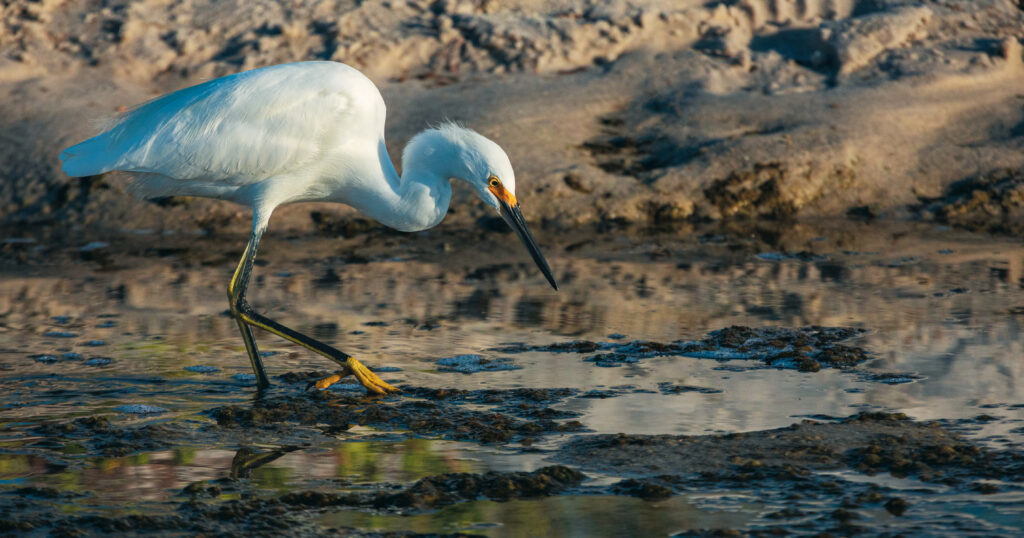During the first half of October, I usually spend a few days at the beach in the white sands of the Gulf Coast. The cooler temperatures and changing winds of the season can bring migratory birds and butterflies to the area and send most of the throngs of tourists home.
On a recent trip, with the sun rising quickly in a cloudless blue sky, the beach scenes became too contrasty too quickly to continue shooting there. I left the sunrise location and drove a few miles to the Fort Pickens area of the Gulf Islands National Seashore in search of birds and butterflies.
Pulling into the parking lot at Langdon Beach, something caught my eye in the rearview mirror. I pulled in facing the ocean, and directly behind me was this snowy egret wading in a deep puddle.
I exited my car as slowly as the egret was stalking its prey — probably not as stealthily as it was — and opened the back hatch to get to my camera. I figured the movement and sound would spook the bird, and I would lose this opportunity.
To my surprise, once I got my camera in hand and sat down on the bumper of my car to begin shooting, the bird was still there, paying me no attention. Staying still and about 35 feet away, I observed the egret hunt and feed for the next 30 minutes. It was the best part of the morning.
Snowy egrets have bright yellow feet with long toes, black legs and black beaks. This particular bird was wading in a puddle in a drainage area. During storms and high tides, ocean waves can wash into this area, trapping water and small prey. The resourceful egret was working the entire length of the water, which was about 25 feet long and 10 feet wide but only a few inches deep.
Starting at one end, the egret would slowly slide one foot forward, wiggling it to disturb the water and scare any prey to the surface. Almost every time it slid a foot in and wiggled, something moved, and the egret would strike with lighting speed to capture it. This feeding expedition netted several small minnows in just a few minutes. I had not observed this behavior before in person, but it is common for these wading shorebirds.
To photograph this stark white bird, I knew I needed to expose for the highlights to capture the detail in the feathers. You can rely on the LCD screen on the back of your camera for this to some degree, but you never know how accurate the screen is in the appearance of highlights and deep shadows.
I first metered on the darkest part of the blue sky as the same light that illuminated the sky was illuminating the bird. This gave me a good start with the exposure of f8.0 at 1/4000 of a second. I changed it slightly to f9 and got the detail in the highlights. For more advanced photographers or those who want to become more advanced, you could check the histograms for the deepest blacks and whites to ensure you’re capturing the details you need.
Just like life, the success or failure of any image is always in the details.



